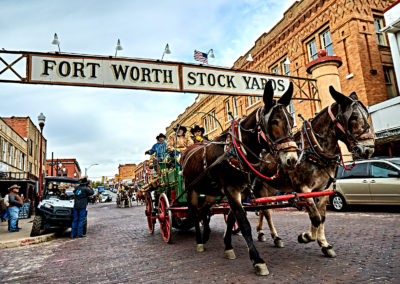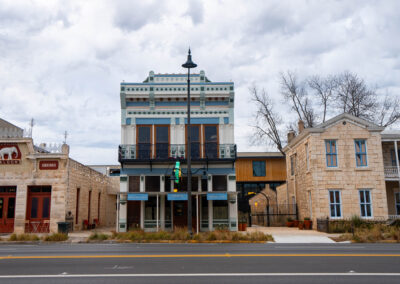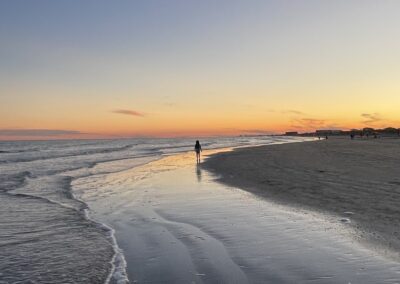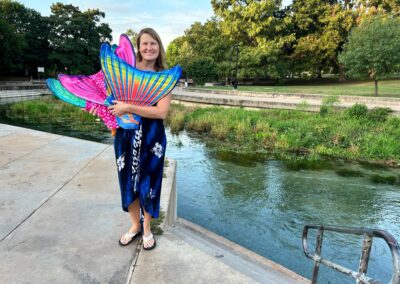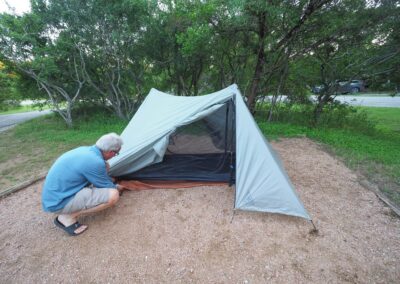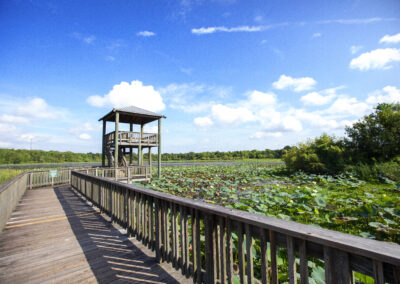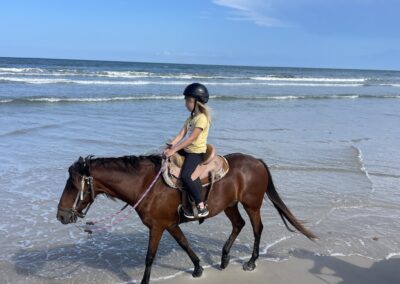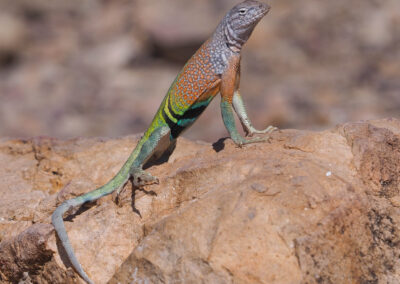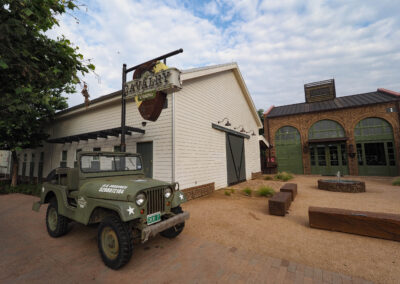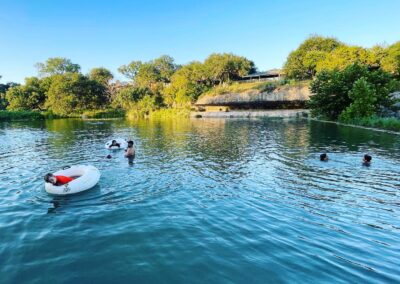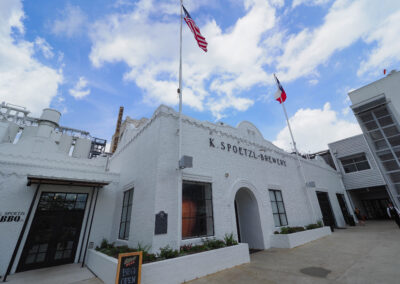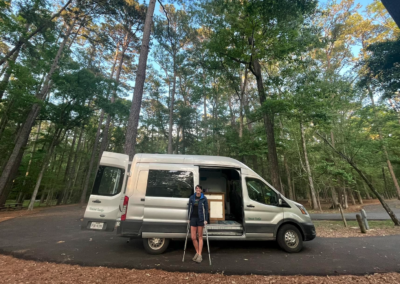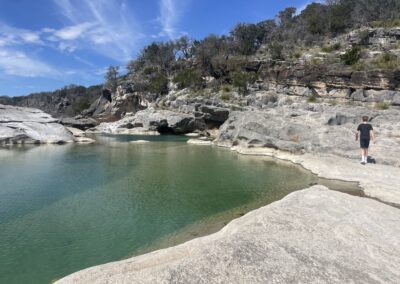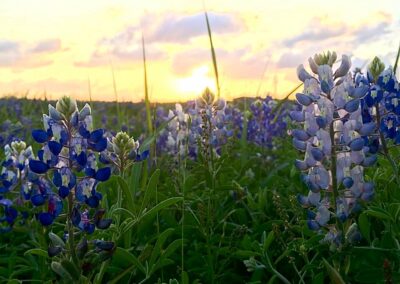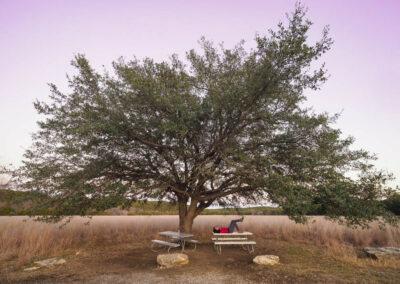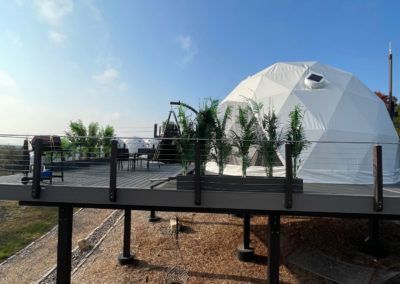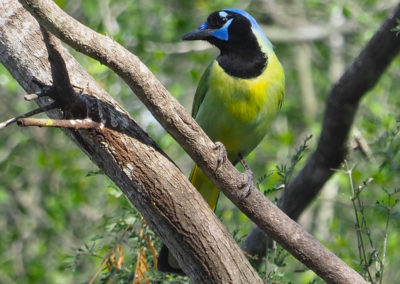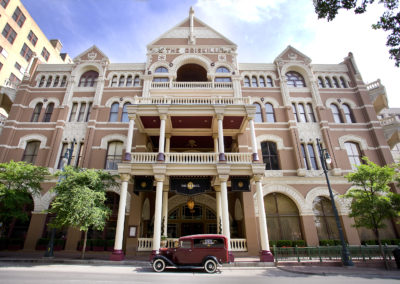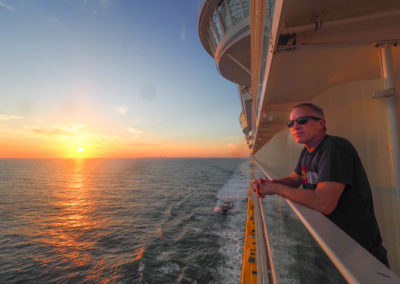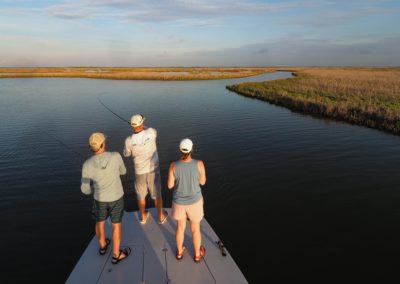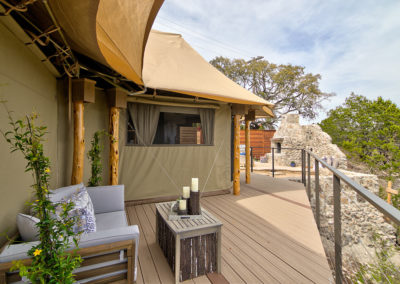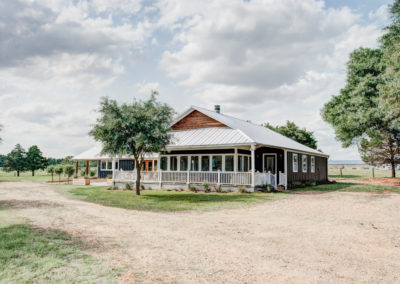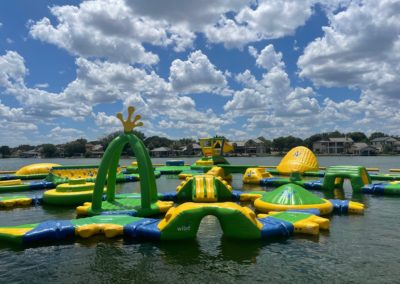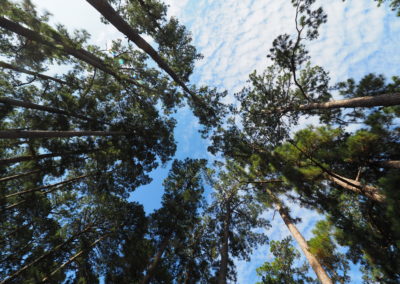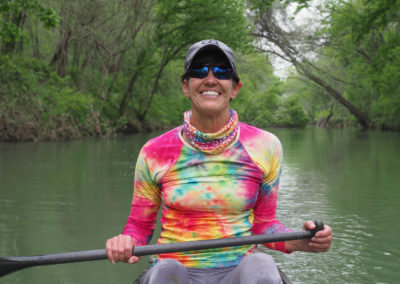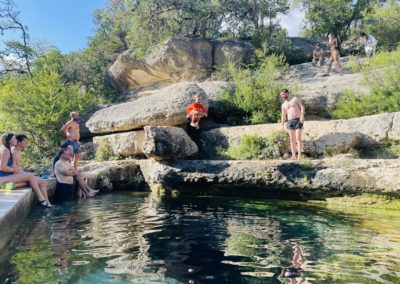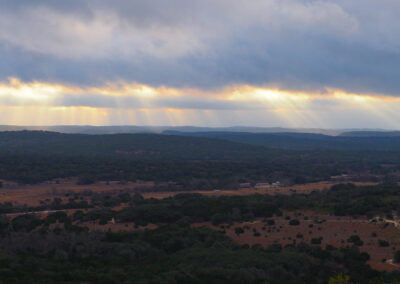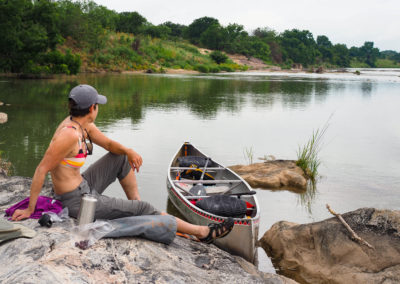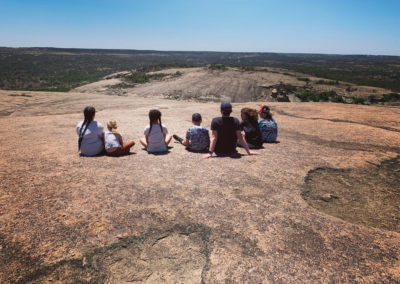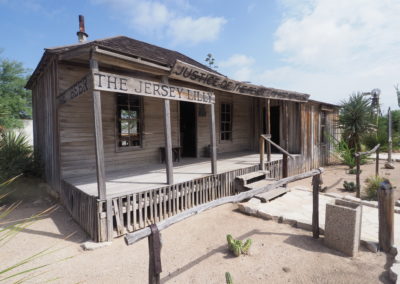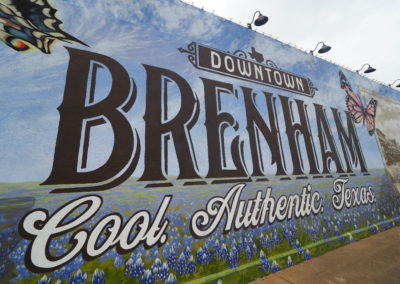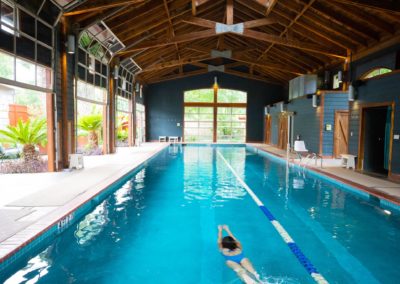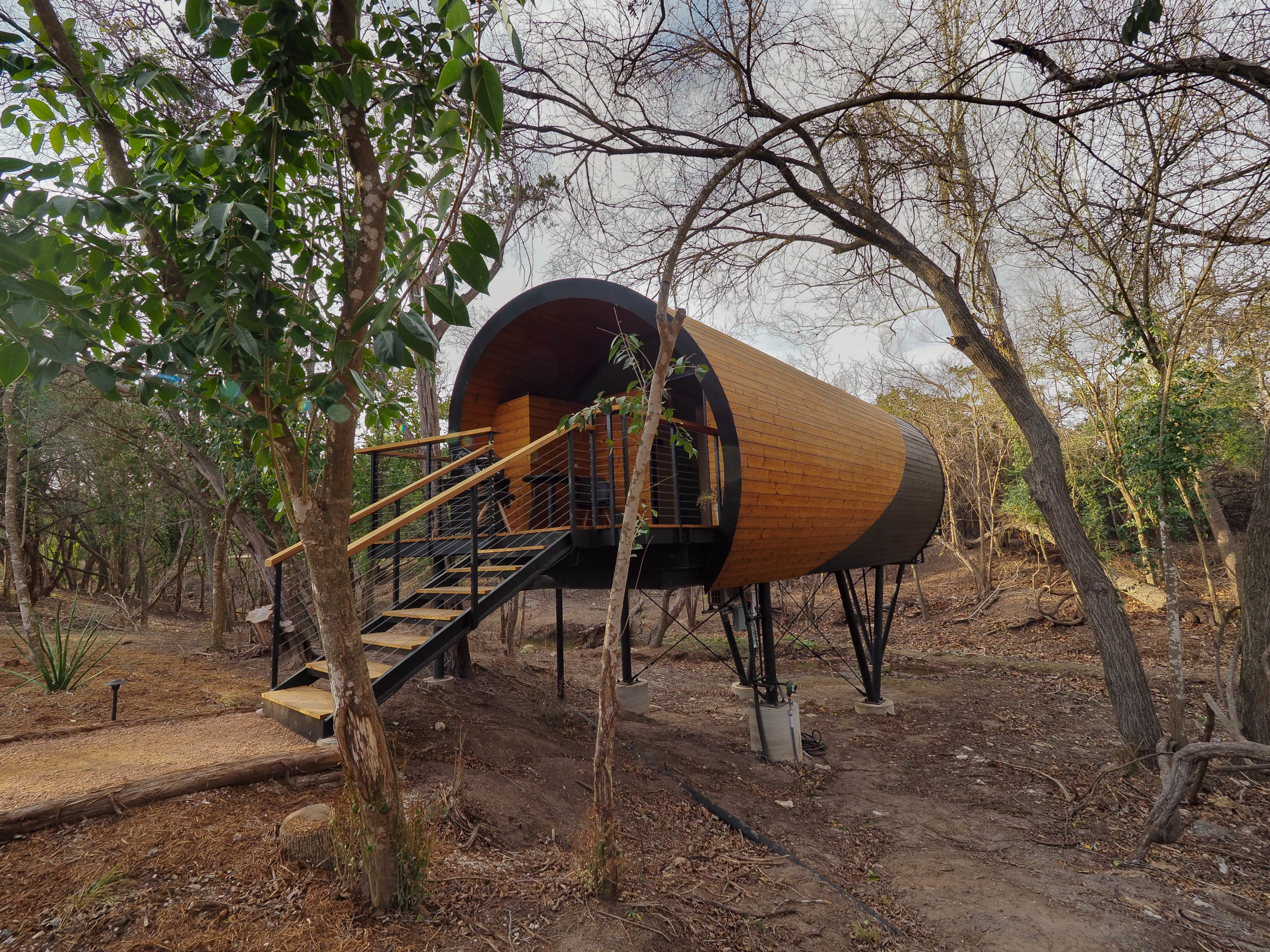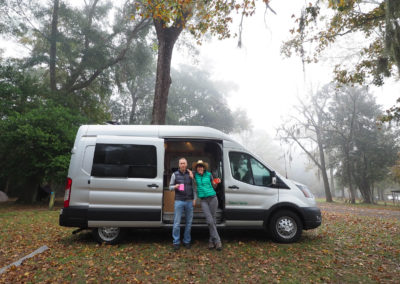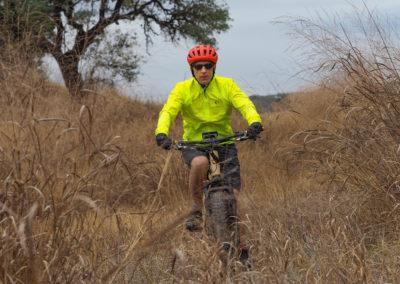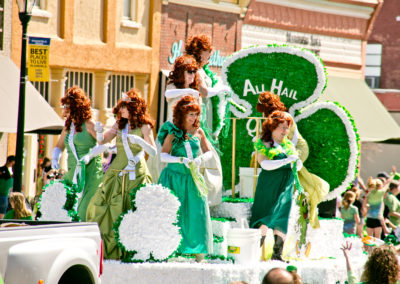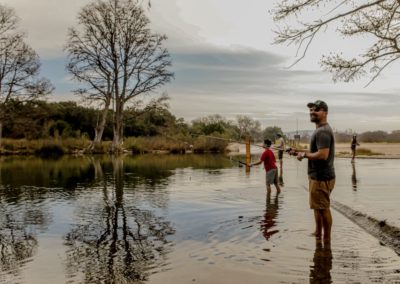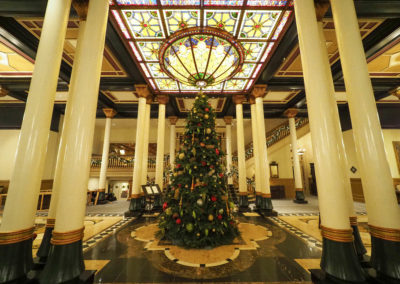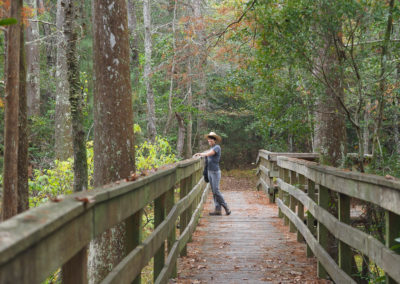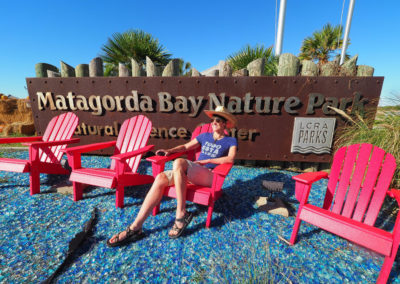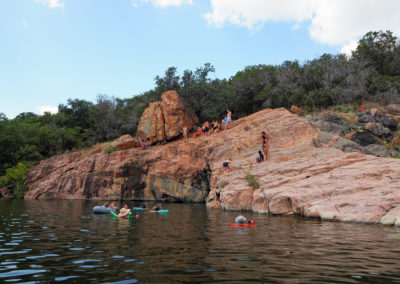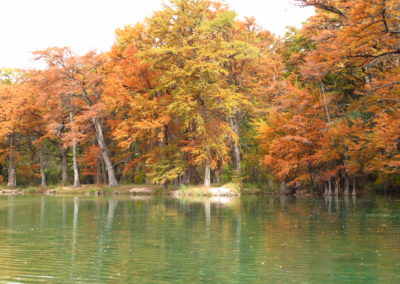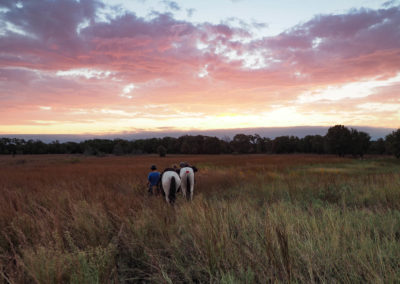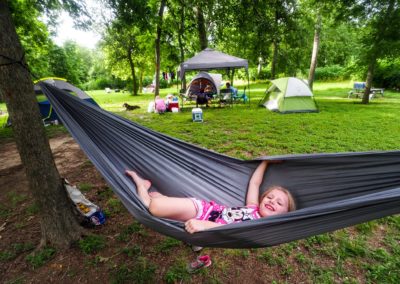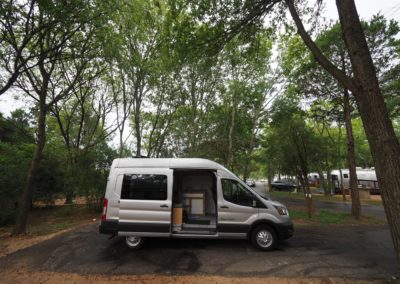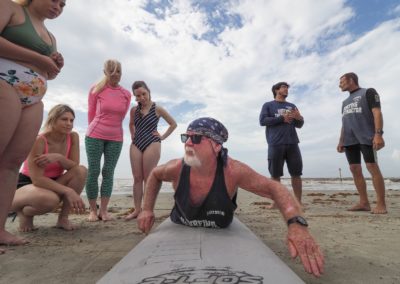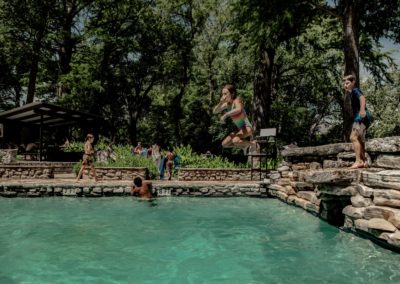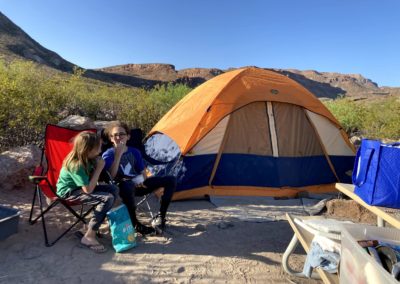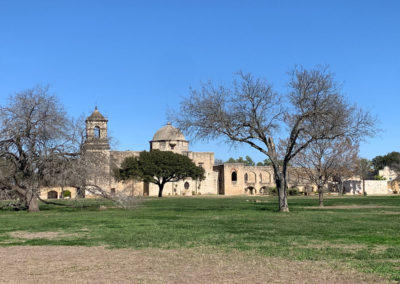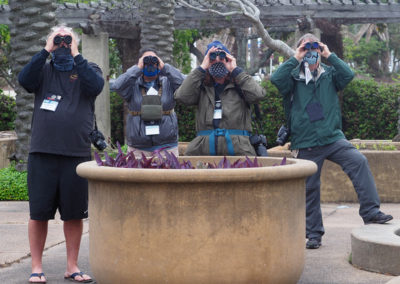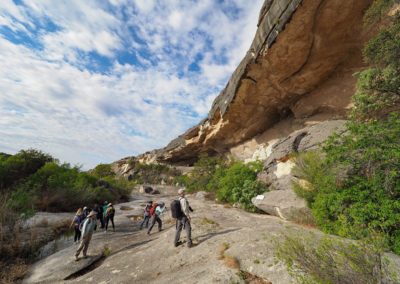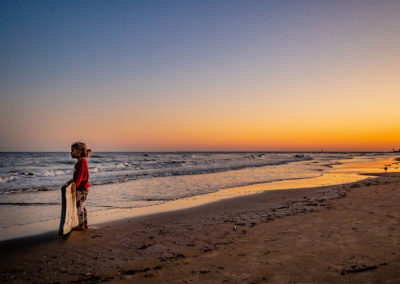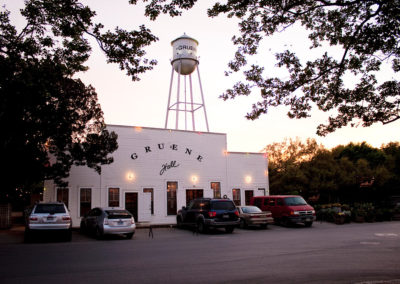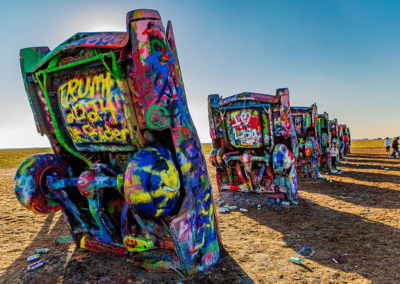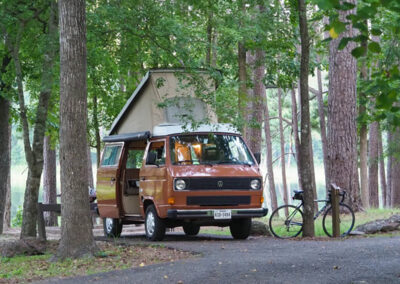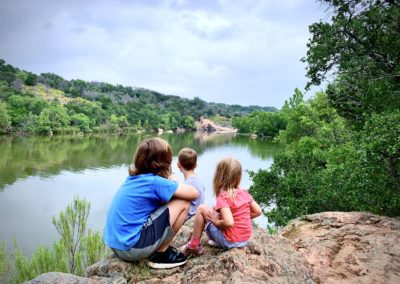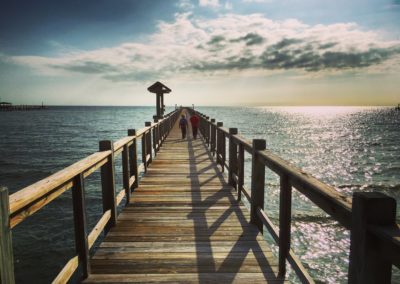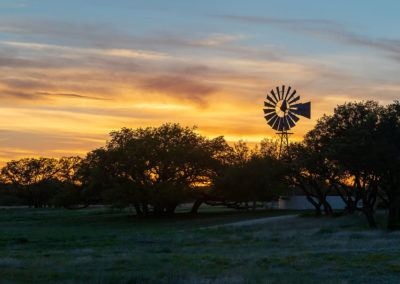
Pam LeBlanc rests under a tree at Dinosaur Valley State Park. Photo by Chris LeBlan
Most folks head to Dinosaur Valley State Park to ogle the fossilized footprints left there by huge, lumbering reptiles some 113 million years ago.
And indeed, the sight of a platter-sized track made by an ambling sauropod thrills the soul. But I discovered a lot more to love about the park, located along the Paluxy River just outside of Glen Rose, during my February visit.
But first things first.
The park’s resident dinosaur sculptures

This sculpture of a Brontosaurus was created for the World’s Fair in New York City. Today it stands near headquarters of Dinosaur Valley State Park. Pam LeBlanc photo
Two towering dinosaur models greet visitors outside park headquarters. The Sinclair Oil Corporation built nine of these dinosaur sculptures in all, as part of an exhibit at the 1964 World’s Fair in New York. (Sinclair’s mascot was a Brontosaurus.)
The Tyrannosaurus Rex and Brontosaurus landed here, and I remember seeing them when I first visited as a kid in the late 1970s. The sculptures – one with a long spindly neck, the other with those tell-tale tiny front arms – look cool, but they’re not exactly representative of the beasts that actually left tracks here.
The real dinos that left their tracks
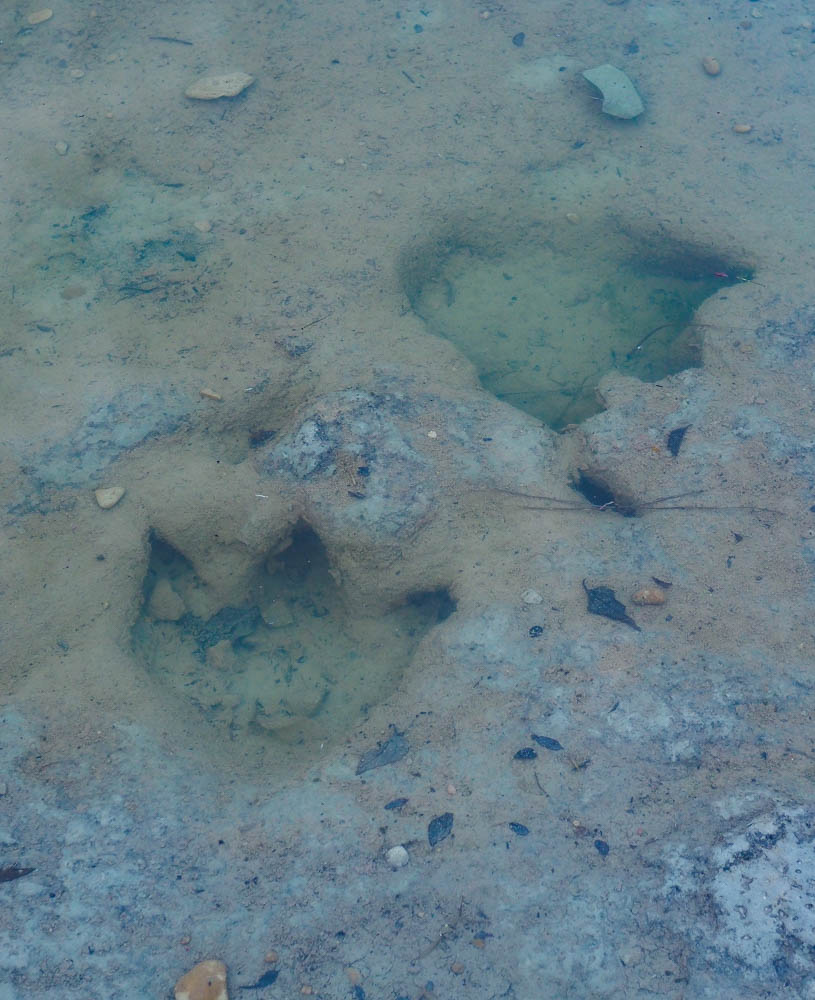
The three-toed tracks of a theropod were made about 113 million years ago. Pam LeBlanc photo
A carnivorous theropod called Acrocanthosaurus, similar to Tyrannosaurus Rex, probably made the three-toed tracks in the horseshoe bend of the Paluxy River. It measured nearly 40 feet long, and like T-rex, ran on two legs as it pursued its next meal.
And a type of sauropod called Sauroposeidon proteles, similar to Brontosaurus, likely made the saucer-shaped prints here. The 50-ton dino measured roughly 100 feet long, walked on pillar-like legs, and used a 40-foot neck to nibble leaves from trees.
Scientists have learned a lot from the prints first discovered here in 1908, a year after a flood exposed them.
A one-room exhibit at park headquarters explains that a man named George Adams found the first three-toed tracks in a tributary of the Paluxy River. Not long after that, Charles Moss stumbled across huge round footprints in the main riverbed while looking for a place to plant his moonshine still.
Ten years later, a paleontologist at Southern Methodist University named Dr. Ellis Shuler published a scientific report about the tracks. But it wasn’t until 1937, when paleontologist Roland T. Bird came to Glen Rose, that the importance of the discovery was revealed.
Bird had come to Texas after finding a theropod track collected in the Paluxy River at a trading post in New Mexico. He conducted his own search and found an entire trailway of prints. Twenty of them were removed and are now on display at the American Museum of Natural History in New York City.
The discoveries changed what scientists knew about the creatures that made them. The tracks showed that sauropods moved slowly, and traveled in herds, with larger adults surrounding younger animals. The tracks also helped scientists figure out that sauropods walked on land – not just in water, where the liquid could help support their heavy bodies.
Exploring Dinosaur Valley State Park
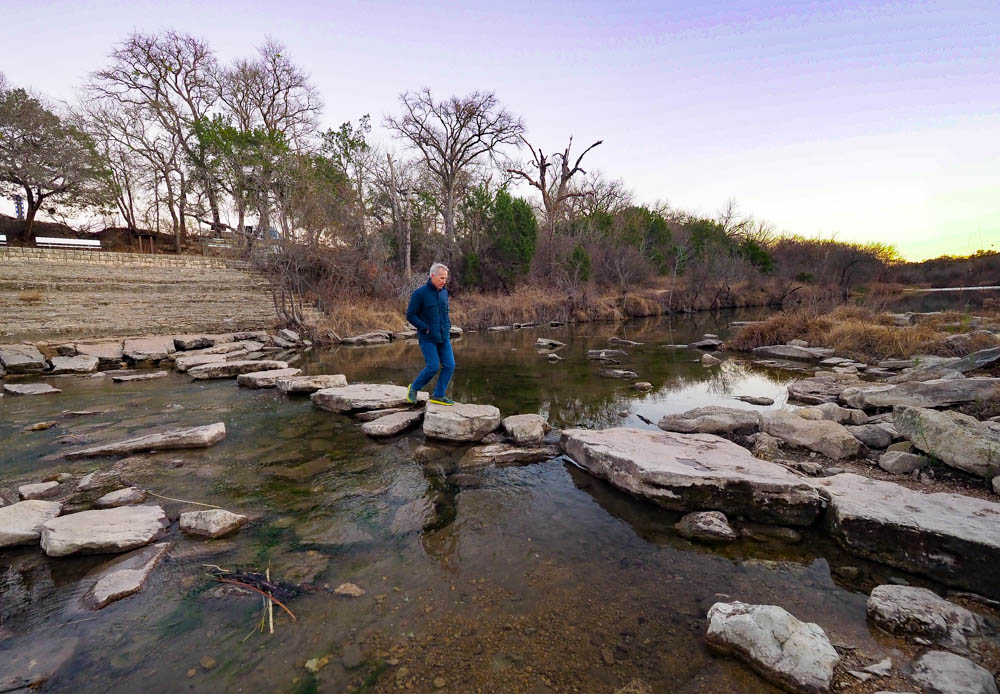
Chris LeBlanc walks across the Paluxy River near the main track site at Dinosaur Valley State Park. Pam LeBlanc photo
After exploring the exhibit, I headed to the river, where I spent some time at the main track site, admiring the footprints.
The visibility of the dinosaur tracks at the park constantly changes. Sometimes they’re underwater, sometimes they’re covered in sediment. During last year’s drought, tracks that aren’t normally visible were revealed, attracting more visitors. During my visit, the Ballroom track site, where hundreds of tracks pointing in all directions mimic the floor of the Broken Spoke on a Friday night, weren’t accessible.
Read more: Best bet for birding Bentsen-Rio Grande Valley State Park
I kept hiking after inspecting the tracks. Just past the river, the trail flanks a grassy meadow, then climbs a ridge. The path is badly eroded, but with a little scampering, I found my way to a high overlook.
From the perch I found on a limestone ledge, I watched the landscape below turn copper as the sun set.
Back in camp and on the trail
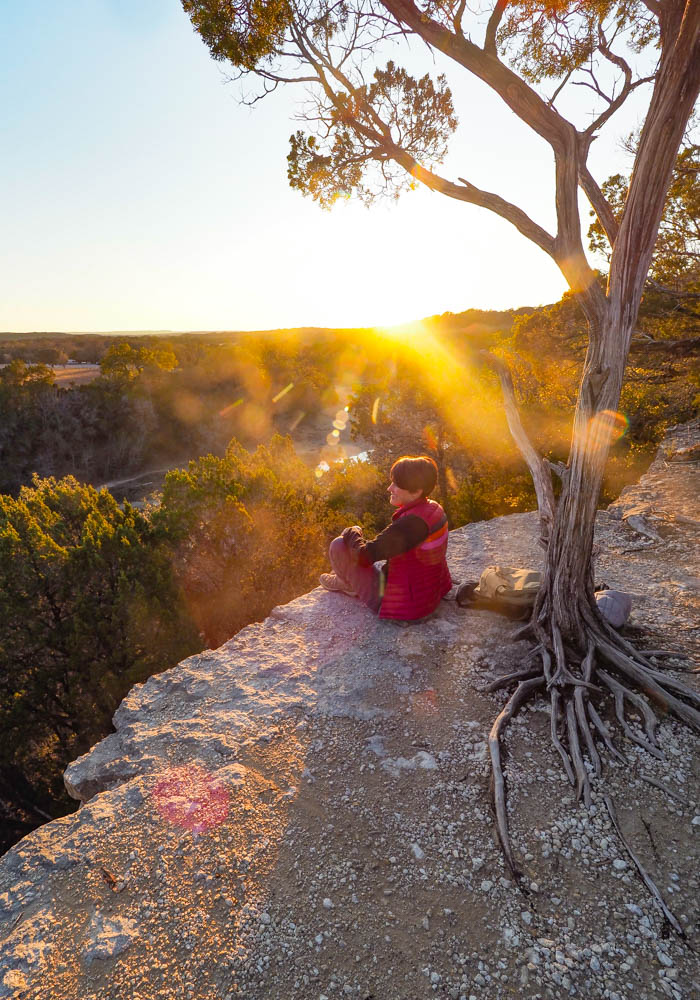
Pam LeBlanc watches the sun set above the Paluxy River at Dinosaur Valley State Park. Chris LeBlanc photo
An hour later, I was enjoying a blazing campfire while my husband cooked dinner in our Ford Transit campervan, dubbed Vincent VanGo.
We picked a spot on the outside of the campground loop, on a bluff above the river. We also timed our visit for mid-week, to avoid crowds. On a brisk February day, only a half dozen sites in the 47-slot campground were occupied.
Read more: Bastrop State Park – a backyard gem, then and now
Also of note? The bathroom facilities are the fanciest I’ve ever experienced at a Texas state park. Besides the requisite toilets and showers, which are a notch above other parks, there’s a seating area.
Hitting the trails at Dinosaur Valley State Park
My biggest discovery at the park wasn’t the tracks – it was the 20 miles of trail that crisscross the grounds.
I laced up my hiking boots in the morning and headed onto the Denio Trail, which skirts a creek then climbs a ridge. There, I discovered some fine backcountry campsites tucked into thickets of trees and brush. You’ll have to walk 1 to 3 miles to reach the six backcountry sites, which feel deliciously secluded.
After scouting those out, I made my way to another scenic overlook, which delivered good views of another section of the Paluxy River.
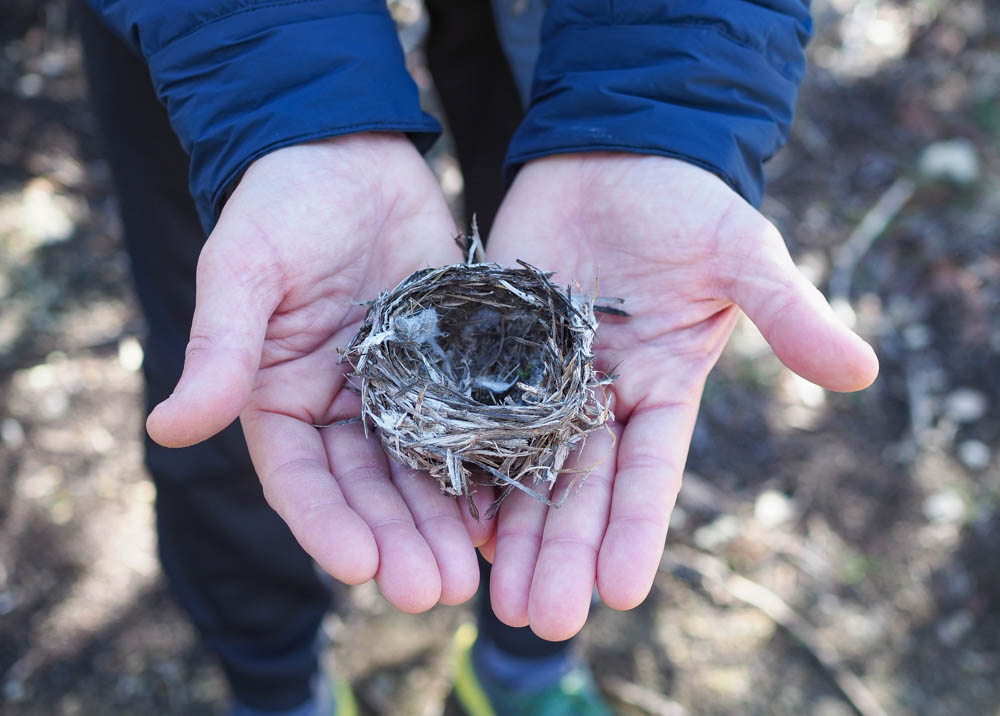
Pam LeBlanc found this tiny bird’s nest at the base of a cedar tree. Pam LeBlanc photo
I also found a tiny – and perfect – bird’s nest overturned on the ground near the base of a tree. I wondered if it belonged to a golden-cheeked warbler, which uses bark from mature cedar trees to build its nest.
Put it on your list
The Texas State Parks system celebrates 100 years this year, and I’m on a mission to explore some of the ones I haven’t visited in a long time.
My advice? Put Dinosaur Valley State Park on your list – even if you’re not interested in the dinosaur tracks. The trails, the river, and the backcountry campsites make it worth a visit.











